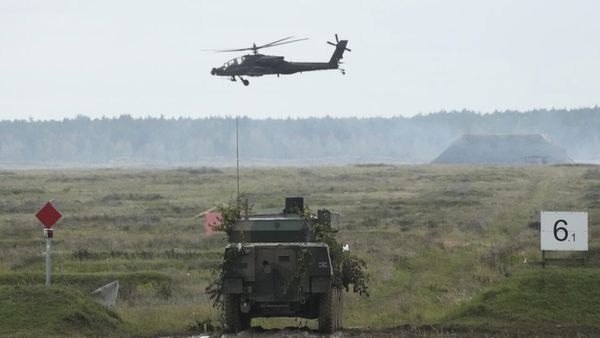
North Korea’s launch of a suspected new type of intercontinental ballistic missile (ICBM) may have been a failure, military chiefs in South Korea have said. The missile was one of three fired on Thursday morning.
The ICBM was fired from the suburbs of Pyongyang but then appeared to have failed during normal flight after the separation of the propellant and warhead sections, defence sources told multiple South Korean media outlets.
“North Korea’s ICBM launch is presumed to have ended in failure,” said the South Korean military, according to the Yonhap news agency.
The long-range missile reached a maximum altitude of 2,000km (1,200 miles) and flew about 750km (460 miles), said Japanese defence minister Yasukazu Hamada, before it “disappeared” from radar over the Sea of Japan, known in Korea as the East Sea, about 1,100km off the coast of Japan.
The launches, between 7.30am and 9am local time, sparked emergency warnings in northern Japan to shelter indoors – in the prefectures of Miyagi, Yamagata and Niigata – and temporarily halted trains over fears one of the missiles would pass overhead.
Japanese prime minister Fumio Kishida said the launches were “outrageous and absolutely intolerable”. The government’s chief spokesperson said Japan had lodged an immediate protest with Pyongyang via Beijing.
US state department spokesperson Ned Price condemned the launch of an ICBM, saying it was a clear violation of multiple UN security council resolutions, and “demonstrates the threat the DPRK’s [Democratic People’s Republic of Korea’s] unlawful weapons of mass destruction and ballistic missile programs pose to its neighbours, the region, international peace and security and the global non-proliferation regime”.
Wendy Sherman, the US deputy secretary of state, said she had spoken to her South Korea counterpart, adding: “Our commitment to the security of the ROK [Republic of Korea] and Japan remains ironclad, and we’ll partner to address DPRK provocations and other shared challenges.”
Seoul said the launches consisted of a long-range missile fired from Pyongyang, and two short-range missiles from Kaechon, north of the capital.
Leif-Eric Easley, a professor of international studies at Ewha Womans University in Seoul, told the New York Times: “Given the lack of prior notification and the experimental nature of North Korea’s missiles, there are dangers that a test on a threatening trajectory could be interpreted as an attack or that a projectile could malfunction and hit a populated area.”
North Korea flew a missile over Japan in October in what it described as test of a new intermediate range ballistic missile (IRBM), which experts said would potentially be capable of reaching Guam, a major US military hub in the Pacific. That launch forced the Japanese government to issue evacuation alerts and halt trains.
The government and military in Japan are on alert for further missile launches on Thursday following the unprecedented flurry from North Korea the previous day.
On Wednesday, Pyongyang fired 25 missiles of various kinds – including one that landed close to South Korea’s waters, in what President Yoon Suk-yeol said was effectively “a territorial invasion by a missile”. It was the first time since the 1945 division of the peninsula that North Korea weapons had landed so close to South Korea, 26km beyond the northern limit line.
Wednesday’s launches were the most North Korea has ever fired in a single day. One of the missiles flew in the direction of a populated South Korean island, triggering air raid sirens and forcing residents to evacuate. South Korea quickly responded by launching guided air-to-surface missiles from jet fighters over the maritime border with the North.
North Korea has said it is responding to Washington and Seoul mounting the largest joint military drills in its history, known as Vigilant Storm. These exercises, designed to deter North Korea’s nuclear ambitions, involve 240 warplanes – including advanced F-35 stealth fighters – conducting about 1,600 sorties. The large-scale drills began on Monday and will run until Friday.







